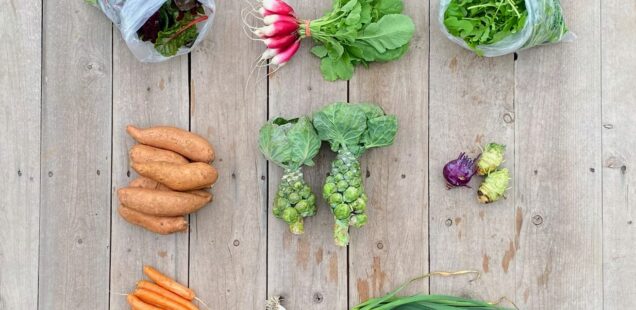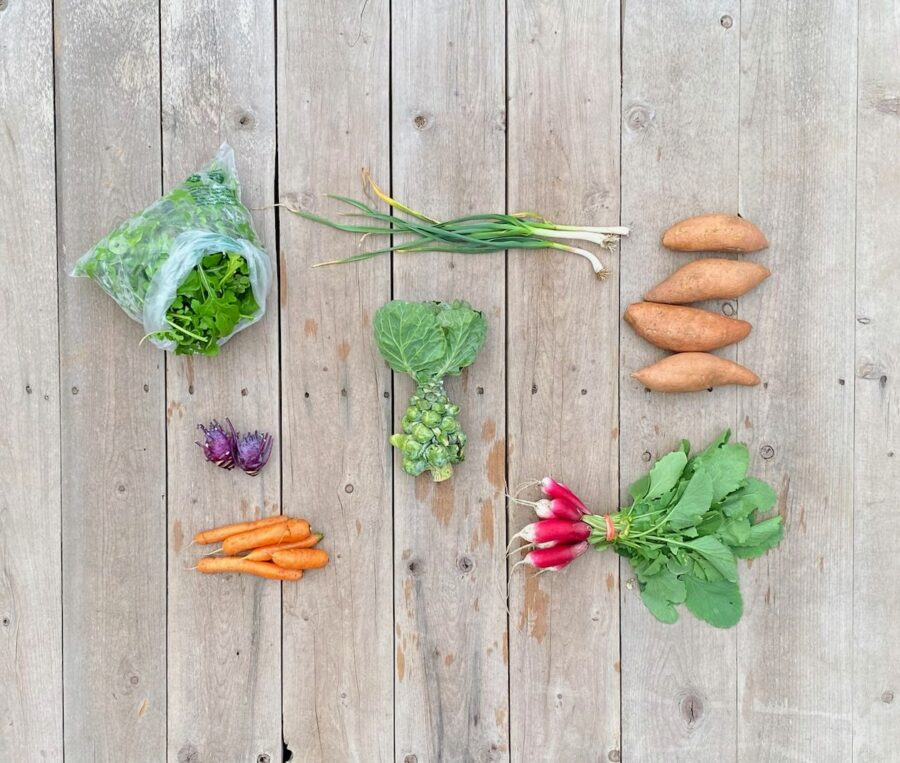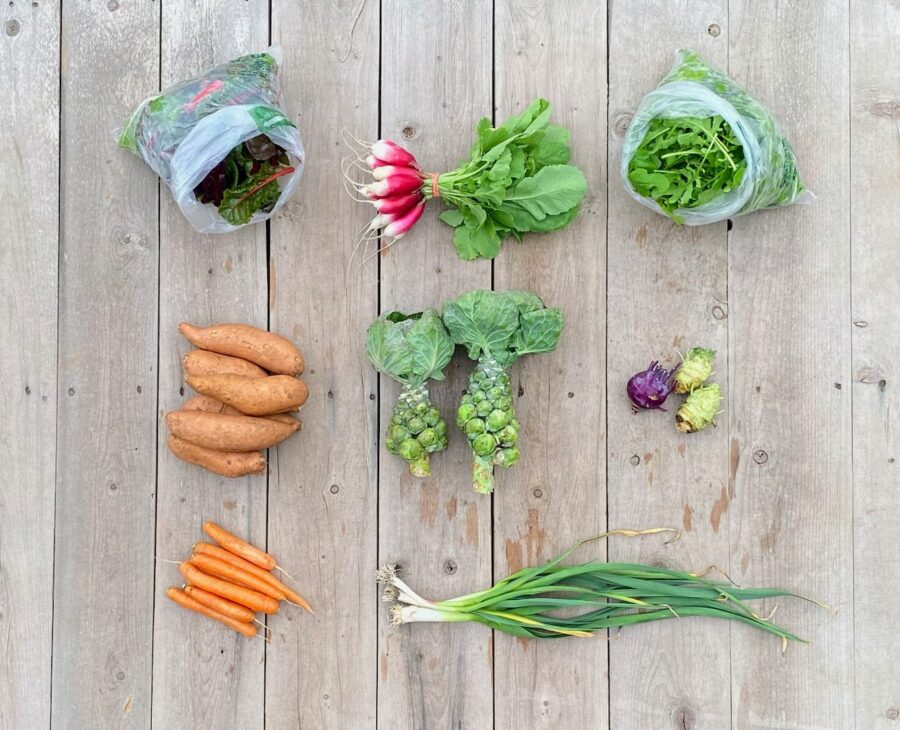
Share Notes Feb 23, 2023
CSA Share Notes:
Welcome to the second Winter CSA box! It sure doesn’t feel like winter this week. But knowing what winter weather does here in Texas, we definitely expect a couple more cold snaps. But our winter crops are so happy and thriving right now, so …lucky you!
I’ll go ahead and give you a warning: this warm weather tricked all the peaches and blueberries into budding and flowering. While it’s pretty and feeding the bees, this is not great news for us humans hoping for fruit. Any frosts after the flowers open will kill them, and kill off the potential for this summer’s fruit crop, and there’s really nothing to be done about it. The only thing to hope for now is that there aren’t any hard frosts. Our usual last frost date here at Red Moon Farm, is Easter, so chances are slim. But hey! weather has been so weird the past several years who knows what will happen.
Remember it’s National #CSAweek! I emailed you about it a couple of days ago. Recall we’ve got a challenge for you this week to help share our farm with your friends and neighbors on social media. Please help us reach people who want to eat healthy and support local ag, and fill up our CSA for Spring and Summer seasons!
Now on to this week’s vegetable line up:
- Brussels Sprouts Stalks — I gotta tell ya’ that there has been a lot of frost damage over Nov. Dec. and Jan. and also some aphid damage. A lovely helpful flock of ladybugs flew in last month and cleaned up all the aphids, but there are residual damaged leaves on some of the sprouts. You’ll simply need to peel off the outer layers of any damaged sprouts like peeling a teeny tiny cabbage (which is essentially what a Brussel Sprout is!). Also, FYI, the big loose leaved top of the sprout can be treated like a cabbage or like collard greens, so don’t let it go to waste. They’re incredibly tasty!
- Arugula —Oh this is one of my winter favorites! So flavorful and yummy. Perfect for a fresh salad with feta, pumpkin seeds, perhaps some fresh strawberries, and a good vinegarette.
- Chard — Just for the large shares. These greens blew us away this winter. This crop rarely survives below 20 degrees but they made it through the 10 degree Christmas frost and are growing back beautifully. I love the color array we get from this crop, and the subsequent vitamin boost. These are excellent braised with chicken stock, onion, garlic, a bit of smoky ham or bacon, -and if you’re truly southern- plenty of tobasco sauce.
- Sweet Potatoes — Remember, these are not our taters as we don’t give up the copious garden space for this humongous crop when our neighbors just 5 miles away do such an amazing job of it. Tony Phillips grew these taters. He uses conventional fertilizers, but he doesn’t use herbicides, pesticides, or any post-harvest anti-sprouting sprays which are normally used in commercial operations and are also known endocrine disruptors. We feel safe eating these great sweet potatoes and we hope you enjoy them.
- Green Garlic — These are not green onions! This crop comes up from the leftover garlic left in the field from last yrs harvest. Some bulbls always break off in the ground, and then in the fall a lovely little cluster of garlic sprouts from all those little cloves and grows clusters of tender sprouted garlic greens. Both Large and Regular shares received this tasty crop. Use them like green onions to top a dish with mild garlic flavor, or cook them like leeks into any dish that calls for garlic. (Use at least triple what you would use for cloves of garlic as their flavor is much more mild.) You can use both the white part and the green part most of the way up the leaf till it starts to get a bit fibrous near the ends. They’re heavenly.
- Carrots — Without their tops, as bugs made a tasty meal of them. Best carrots we’ve grown, y’all. I hope you love ’em. And this is the last of this planting. Our next planting will be ready in late April or May. Both share sizes received our sweet, crunchy carrots.
- Kohlrabi — These raabs are a bit stunted by the Christmas frosts so they’re quite petite, but they’re tasty. Kohlrabi is excellent peeled and sliced, sprinkled with a little lemon or salt. It’s also fantastic in a cream soup, or in a broccoli salad. Think of it like a broccoli stem, crunchy, slightly sweet and nutty, very yummy.
- Radish — Everyone received a whole bunch of french breakfast radishes, an heirloom with the loveliest slender roots with pink tips. Did you know the tops are also edible? They’re best when super tender in mild growing conditions- right now! You can braise or sauté them, or eat them fresh.
Veggie Storage tips:
Almost everything you received today will keep longest stored in the fridge sealed up in produce bags. Remove roots from their tops. The leaves suck nutrients and moisture from the roots if they’re kept intact so store the greens separately, and this will keep the roots from getting rubbery. Everything will need a thorough washing before cooking, but leave the dirt on until you’re ready to use them to prevent spoilage.
We’d love to hear stories and recipes of your culinary adventures this week. Send us a note or post a comment of how you’ve used your CSA share.
Your farmers, Jess & Justin

